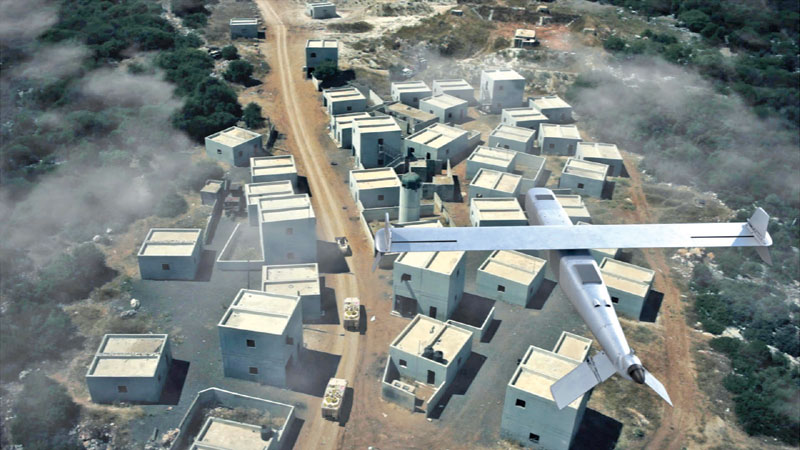Loitering munitions are progressively changing the face of warfare
 Col Mandeep Singh (Retd)
Col Mandeep Singh (Retd)
The advent of jet aircraft in the mid-1940s made the already skewed playing field between air and air defence a bit more asymmetrical, in favour of the jet. One option to counter jet fighters was to use jet aircraft to fight them but this was a costly proposition and not all countries could afford to have them in the required numbers. The other option was to develop a ground-based system that could neutralise the jet advantage; thus, the development of surface-to-air missiles (SAM).
In its early years, the SAM challenged the manned aircraft effectively and threatened to neutralise jet aircraft’s supremacy over the air space. In Vietnam alone, the United States lost more than 200 aircraft to SAMs. There was an urgent need to find a counter to the SAM with the United States Air Force (USAF) resorting to ‘Wild Weasel’ tactics, using a pair of manned aircraft armed with Anti-Radiation Missiles (ARM) to take out hostile radars and SAM sites. This ran the risk of loss of human lives when one of the aircraft ‘flashed’ the radar. Though more advanced ARM, like the British ALARM, were fielded with an added loiter capability, they were still limited by the time the missile could loiter (stay in the target area). In loiter mode, ALARM will, when launched, climb to an altitude of 13,000 metres. If the target radar shut down, the missile deployed a parachute and descended slowly until the radar lit up again, and then targeted the radar. The need was to stay longer in the air, to hunt the enemy radar and SAM sites without running the risk of loss of human lives.
In 1973, the United States Defence Advanced Research Agency (DARPA) began working on developing cheap, small drones to attack enemy air defences. The project, called Axillary, aimed at deploying fleets of low-cost, explosive-carrying drones that would loiter above an area to home on to, and destroy any emitting radar. The project had its roots in a Pentagon-backed project at the CIA though it incorporated a US Air Force (USAF) programme as well. Axillary was conceived as a fully autonomous system with no human control once the drones were launched. As the then USAF director of Reconnaissance and Electronic Warfare explained, “We don’t want a man in the loop. We want to let it go, find a radar, and hit it and never come back. We don’t want the manpower, the logistics, to bring it back. It’s a one-way mission.”
In his book Army of None, Paul Scharre writes that the project was shelved because of budgetary constraints and a shift to more complex anti-radar systems. There were other attempts as well to develop loitering munitions including the Tomahawk Anti-Ship Missile (TASM). It was launched over the horizon at possible locations of Soviet ships, then flew a search pattern over a wide area looking for their radar signatures. If it found a Soviet ship, TASM would attack it. TASM was briefly fielded by the US Navy as the first operational fully autonomous weapon but was taken out of service in the Nineties, writes Paul Scharre in Army of None.
A concurrent programme to develop a persistent anti-radiation missile resulted in Tacit Rainbow and the system was extensively tested but never fielded. Meanwhile the Israelis, after the bitter experience of the Yom Kippur War and the SAM threat posed by the introduction of newer Soviet systems in the region, were looking at a suitable weapon system to counter the newer and more potent SAMs. The result was the Harpy system that was deployed by the late Eighties. it was to be the first loitering munition to be used in combat. Since then, the loitering munitions have rapidly proliferated, especially in the last five years. In 2017, there were less than 10 states that produced roughly 35 types of one-way attack drones of various sizes and capabilities. This number more than doubled in five years with a 2023 survey identified over 200 types of one-way attack drones with more than 120 entities in over 30 countries having developed, or currently developing (or producing) these weapons.

Prior to 2018, nearly two-thirds of the one-way attack drone systems were developed or produced in the United States and Israel. In the last five years, just 12 per cent of new models originated from the United States and Israel with Asia accounting for more than one-third of new types of loitering munitions. The diversification can also be seen in the type of loitering munitions being developed. Until recently, the loitering munitions were mostly fixed-wing type. This has given way to an increasing share of vertical take-off and landing drones with around one-quarter of new loitering munitions being from this category. This trend is driven by demands for more portable systems, as well as for those that could potentially be recovered by an operator.
With such diversification, it is difficult to have a standard definition of loitering munitions and they are described varyingly, according to their type and use and degree of control exercised by the operator. In the article Loitering Munitions: Flagging An Urgent Need For Legally Binding Rules For Autonomy In Weapon Systems, Ingvild Bode and Tom F.A. Watts write, “Loitering munitions are a distinct category of expendable uncrewed aircraft that can integrate sensor-based analysis to hover over, detect, and explode into targets.” According to Paul Scharre, the loitering munitions can also be described as autonomous weapons that “can search for, decide to engage, and engage targets on their own and require no human interference.”
With very diverse types of loitering munitions in use today, the types of missions carried out by the loitering munitions have also evolved and they have come a long way from being a specialised weapon to target anti-aircraft systems to becoming one of the most effective tools in any arsenal and are used for tasks ranging from airstrikes to counter-artillery or just dropping grenades. The loitering munitions and one-way attack drones in service today range from hand-carried micro drones to those weighing upwards of 150 kilograms. To carry out their tasks, they often combine intelligence, surveillance, and reconnaissance (ISR), communication nodes and data transfer capabilities in one platform. They are not just strike platforms but also provide vital intelligence, albeit raw, to the frontline troops.
The proliferation of loitering munitions has resulted in the availability of very lethal and potent capabilities to both state and non-state actors. While the fielding of Switchblade provided the foot soldier with a potent munition to take out enemy soldiers and equipment, the Iranian drones have given several non-state actors the ability to carry out long-range precision strikes. The reason for using loitering munitions both in the precision strike role and in the war of attrition is the low-cost and effective option provided by them without any risk to human lives. However, the reasons for their wide usage vary from one conflict to another.
You must be logged in to view this content.

